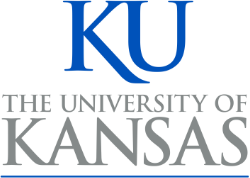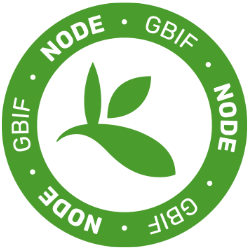 Berlin, the Museum for Naturkunde, and Botanischer Garten und Botanisches Museum proved to be an engaging setting for SPNHC 2016. Conference attendees packed the conference rooms and exhibit hall of the andel’s Hotel in Friedrichshain. You can download the program guide and share the recordings with your colleagues for many of the talks. The Global Genome Biodiversity Network (GGBN) held its meeting concurrent with SPNHC 2016 which made for some nice networking opportunities such as having joint poster sessions.
Berlin, the Museum for Naturkunde, and Botanischer Garten und Botanisches Museum proved to be an engaging setting for SPNHC 2016. Conference attendees packed the conference rooms and exhibit hall of the andel’s Hotel in Friedrichshain. You can download the program guide and share the recordings with your colleagues for many of the talks. The Global Genome Biodiversity Network (GGBN) held its meeting concurrent with SPNHC 2016 which made for some nice networking opportunities such as having joint poster sessions.
Some conference highlights.
SPNHC 2016's theme of Green Museum – How to Practice what we preach? led to one cheeky (in-a-good-way) plenary talk. Michael Braungardt, from the cradle2cradle organization, emphasized the need to make good product choices when planning conferences (and operating museums and collections). “The Cradle to Cradle CertifiedCM program strives to bring about a large scale transformation in the way we make things.” Imagine designing a conference so the program and swag are all beyond sustainable. I suspect many attendees who are future local SPNHC conference organizers will now be inspired to try and meet cradle2cradle standards. There are implications too, for the collections themselves and the materials and chemicals we use in collections everyday. In preserving natural history specimens and data for the future – hopefully we do it in a way that supports a healthy planet.
Cradle to Cradle is a framework for going beyond sustainability and designing for abundance.
With an international collaborative focus, Synthesys3, iDigBio, CETAF, GBIF, and others organized a series of 5 linked-symposia covering:
- current digitization and imaging trends,
- the infrastructure needed to support these worldwide efforts,
- ideas for how to prioritize our efforts across regions, countries, and internationally, and
- next step ideas for how we might create a distributed ADBC-type of program across continents.
Brexit added some complexity and nuance to our group conversations on Thursday and Friday on prioritization, infrastructure, and potential worldwide data mobilization models. Some groups planning to submit funding proposals may, or may not need to adjust them as a result of Brexit. It’s a time of uncertainty for a few key groups. Others also seemed to agree it’s time to reach out to industry, administration and museum directors to coordinate and speed up our data mobilization efforts along with stressing the use of the data for research and applications development. Indeed, it's the momentum after these meetings that is challenging. Can we, as a worldwide collective, push these ideas forward? As was said in more than one of the talks and panel sesssions, if we're going to remain useful and relevant, we must.
It was exciting to see some of the latest developments at SPNHC 2016 from Notes from Nature, Biospex, and others. It’s getting easier to invite more people to help us with data transcription, and to get that critical data back into our respective collection databases and out to data aggregators. And, just in time too, because the 2nd WeDigBio event is set for October 20-23, 2016 and planning is well underway. Are you planning to participate? To host an event? Invite your friends and neighbors?
For the future of our museums, our staff and students need up-to-date skills, knowledge, and access to expertise and infrastructure to support collections, research, policy development, education, and outreach. Anna Monfils and Gil Nelson organized a SPNHC 2016 symposium on this topic: Small Collections Symposium - Blending the educational resources of small and large collections for training the next generation of museum professionals, (recordings morning session, afternoon session). You too, can join in this conversation at an upcoming webinar: Addressing Biological Informatics Workforce Needs, presented by: American Institute of Biological Sciences. It’s Wednesday, July 20, 2016, 1:00 PM EST. Register (free).
After the conference proper, 10 workshops (yes, 10!) took place including one jointly organized by the EU-based Synthesys3 and iDigBio and hosted by the Botanischer Garten und Botanisches Museum. At this hands-on event, participants experienced demos of ABBYY Fine Reader, Symbiota, and Inselect software. The aim of our Synthesys3 - iDigBio collaboration is to make these tools more accessible to institutes of all sizes. Inselect currently supports automated recognition, cropping and annotation of scanned images of items such as drawers of pinned insects and trays of microscope slides. ABBYY FineReader is an OCR tool which has been found to perform well for specimen label images, enabling the automated capture of specimen label data. Symbiota is a virtual platform which incorporates OCR for NLP, machine learning (ML) and crowdsourced transcription modules. It is likely that this workshop will be offered again in Europe. See the wiki for more about this workshop.
Want more about SPNHC 2016 from other perspectives? See these bits:
-
NHMUK on the need for global efforts to work together, from SPNHC 2016 Global digital collections | Digital Collections Programme
-
The Biodiversity Heritage Library (BHL) at SPNHC 2016
- NHMUK from SPNHC 2016 about Digitisation futures in Berlin | Digital Collections
- SciColl presentations at SPNHC and GGBN
SPNHC 2017 heads to Denver, Colorado June 18-24. The theme is The Next Generation in Best Practices. Local chair, Kelly Tomajko and the local organizing committee (LOC), planning SPNHC 2017 want to hear from you. The SPNHC 2017 LOC is a partnership between the Denver Museum of Nature & Science and the Denver Botanic Gardens. The SPNHC Denver 2017 Facebook page is up and ready for conversations. Several workshops are already being planned. Some SPNHC members are eagerly looking for opportunities to strengthen their data skills and data literacy. So, I’m hoping one of these workshops will be a Data Carpentry workshop, discussions are happening. Demo Camp continues to be very popular at SPNHC and discussions are underway about enhancing and developing it further. Will you have a software demo ready to show us at SPNHC 2017? Or do you have a request?
Historic Event! SPNHC + Biodiversity Information Standards TDWG meet together in 2018! Dunedin, New Zealand with the theme: Collections & Data in an Unstable World. These two key groups are vital to our success in sustaining and designing successful collections effective in supporting worldwide research and collaboration. Two years from now, for the first time ever, they’ll meet together. “Dunedin’s Otago Museum, in partnership with the University of Otago, will host the inaugural 2018 conference for the Society of the Preservation of Natural History Collections (SPNHC) together with the Taxonomic Database Working Group (TDWG).” https://www.cimmagazine.com/2016/07/06/naturally-historic-coup-for-dunedin/ Start making plans now – to take advantage of the opportunities having both communities meet together. Discounted rates for flights, room-sharing, university housing, and other cost-saving initiatives are being organized.
---Hope to see you at SPNHC 2017 and 2018, Deb et al at iDigBio







